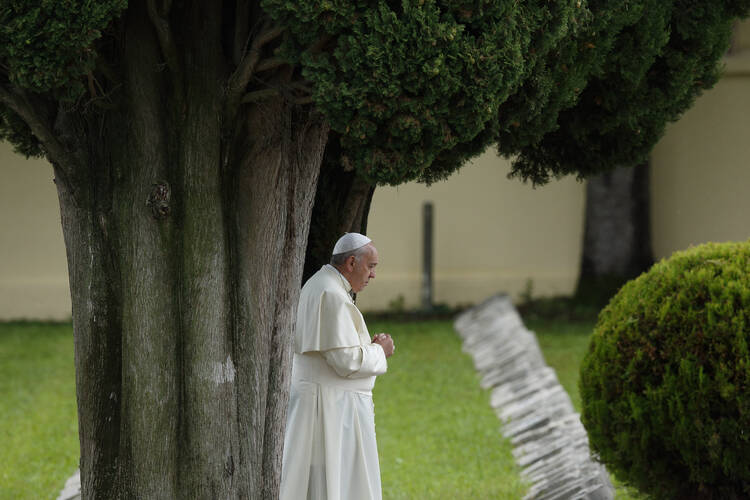Creation Connections
In “Laudato Si’” Pope Francis reminded the world that everything is connected. In his recent decision to mark Sept. 1 as a World Day of Prayer for the Care of Creation, he further emphasized that fact. Observance of the day, already celebrated by the Orthodox Church, unites the Roman Catholic Church with our brothers and sisters in Christ in asking for assistance in caring for creation as well as for forgiveness “for sins committed against the world in which we live.” In his recent encyclical, Pope Francis praised Ecumenical Patriarch Bartholomew, leader of the Orthodox Christians, for asking people to “replace consumption with sacrifice, greed with generosity, wastefulness with a spirit of sharing.”
The World Day of Prayer for the Care of Creation reminds Catholics to consistently renew our commitment to these values as well. By adding this day to the church calendar, Francis asks us to make care for creation a part of our daily lives and to recognize that much remains to be done to protect what God has given us. It reminds all people that the encyclical was not meant to inspire us for one news cycle but to encourage us to truly connect with others, with God and with creation throughout our lives. It is fitting then that Francis also announced recently that the theme for the 2016 World Peace Day will be “Overcome indifference and win peace.” It is a theme that suggests a way forward in our efforts to live out the call of “Laudato Si’” and the World Day of Prayer for the Care of Creation. Indeed, everything is connected.
Small but Loved
“It is a small college. And yet there are those who love it.” These words, spoken by Senator Daniel Webster in defense of Dartmouth College in 1818, remain relevant today not just to the 1,600 private, nonprofit four-year colleges in the United States but to many colleges that not only prepare students for a job but challenge students with a liberal arts curriculum. For those students, as life goes on, the college takes on the role of another self. Stab the college and the graduates bleed.
Sweet Briar, a 114-year-old women’s liberal arts college on an old plantation in the foothills of Virginia’s Blue Ridge Mountains, known for its close student-faculty relationships, equestrian program, boat house, 21 buildings on the National Register of Historic Places, junior year in Paris and $85 million endowment, found itself last spring with only 532 students (plus 170 studying abroad), when they needed 800 to survive. It announced it was closing.
But its alumnae love it. They fought back, raised $12 million, set up a new board with a new president, reactivated the Paris year, formed an equestrian partnership with nearby Lynchburg College and hustled to retrieve 300 students who had transferred out in anticipation of the closing. Over the past 50 years the number of women’s colleges in the United States has decreased to 46 from 230. If it survives, Sweet Briar will be under pressure, as other women-only schools have been, to admit men. Meanwhile, it is back in business, and those who love it rejoice.
The Summer Surge
After years of steady declines in major U.S. cities, homicide rates are once again on the rise—up an average of 19 percent. Some cities are enduring even steeper increases. Houston is up 36 percent, accordintg to the Major Cities Chiefs Association. New Orleans saw a 22 percent increase. More alarming have been a 60 percent spike in Baltimore and a leap of 117 percent in Milwaukee.
Some criminologists suggest 2015 may turn out to be the year when a two-decade-long decline in homicides finally reaches its end as state law enforcement budgets tighten and the flow of guns into U.S. cities continues unabated. Another possible contributor to the rise is a so-called Ferguson effect. Are police, demoralized by a brutal year of public opprobrium, too worried about making the wrong call to do their jobs effectively?
Other procedural shifts may also be having an impact. New York’s notorious stop-and-frisk policy was abandoned in 2014 in begrudging compliance with the Fourth Amendment. So far this year homicides are up 11 percent in New York, and the number of illegal guns pulled from the streets is down about 50 percent.
These outcomes suggest stark and ultimately fraudulent choices. Do citizens really have to trade personal liberty for public safety? Or worse, tolerate a criminal justice system awash with inequities?
Quick fixes will be tempting, but finally self-defeating. Long-term strategies aimed at reviving urban communities—targeted investments that put community members back to work as well as jobs and recreation programs for urban youth—should be prioritized over reversals of policies that remain constitutionally and morally dubious. Tighter gun control and gun trafficking policies that might do the most to reduce homicides—as well as the number of life-and-death decisions police have to make—are unfortunately the least likely measures to be implemented.








